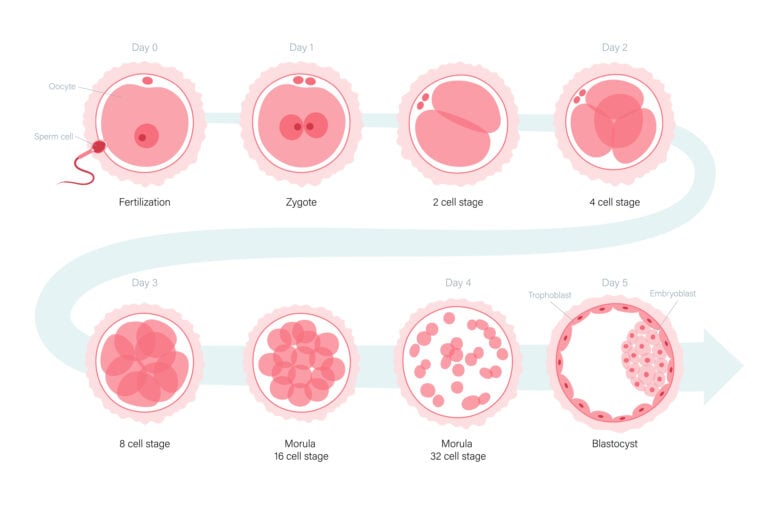Embryo grading plays a pivotal role in the success of in vitro fertilization (IVF). Understanding the science behind embryo grading can empower patients with valuable insights into the potential of each embryo.
“At Shady Grove Fertility, our seasoned embryologists employ advanced techniques and expertise to carry out accurate embryo grading,” shares Dr. Anne Hutchinson, who provides patient care at SGF’s Newark, Delaware, location. “By meticulously evaluating the embryos’ characteristics, we provide our patients with important information about their embryos’ quality, guiding them in making informed decisions about their treatment plan.”
What is embryo grading?
Embryo grading is a detailed evaluation process that assesses the quality and developmental potential of embryos created during IVF. Our skilled embryologists employ specific criteria to assign grades based on the appearance and developmental stage of each embryo.
Embryo grading is vital in the IVF journey as it aids our embryologists in selecting embryos for transfer. By choosing high-quality embryos, the chances of successful implantation and pregnancy significantly improve. This process also helps reduce the risk of multiple pregnancies, as transferring fewer, high-quality embryos can lead to safer and more successful outcomes.
How are embryos graded?
Embryo grading typically involves the assessment of three main factors:
- Cell number and division: The number of cells and how evenly they divide are crucial indicators of embryo health. Embryos that divide consistently and have an appropriate number of cells at specific stages are often assigned higher grades.
- Fragmentation: Fragmentation refers to the presence of small, irregular pieces of cellular material within the embryo. Lower levels of fragmentation are associated with higher-quality embryos.
- Symmetry: Symmetry is a measure of how well the cells are organized within the embryo. Well-organized cells with uniform shapes contribute to a higher grade.
Understanding the grades:
At SGF, we use a letter system for our embryo grading. For example, a top-quality embryo may be graded as “AA,” indicating optimal development and minimal abnormalities. As the grades progress, the developmental potential may be slightly compromised. The first letter assesses the inner cell mass (ICM), which has the potential to develop into a baby, and the second letter represents the trophectoderm (TE), which has the potential to become the placenta.
- AA or AB: Excellent quality embryos with higher chances of successful implantation.
- BB or BC: Good quality embryos with moderate chances of success.
- CC or lower: Lower quality embryos with a reduced likelihood of successful implantation.
The role of grading in the IVF process:
“At Shady Grove Fertility, we understand the importance of embryo grading in fertility treatments,” shares Dr. Hutchinson. “Our experienced team of embryologists employs advanced techniques and expertise to assess and grade embryos. By providing patients with detailed information about embryo grades, we assist them in making informed decisions, enhancing their chances of a successful outcome.”
It is important to note that while embryo grading can help offer guidance, it is a subjective process. For the most reliable information on embryos, your physician may recommend preimplantation genetic testing.
For more information on embryo grading and the IVF process, talk with your care team.
Medical contribution by Anne Hutchinson, M.D.
Anne Hutchinson, M.D., sees patients at SGF’s Newark, DE, office. Dr. Hutchinson is passionate about reproductive endocrinology not only for its cutting-edge science but also for the opportunity to form meaningful, lasting relationships with patients.






